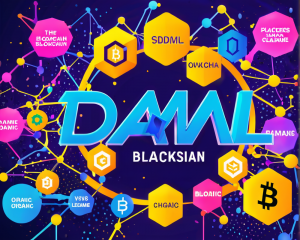The Hype vs. Reality of Blockchain
Remember when blockchain was the golden child of tech discussions? Zooming in on 2017, it felt like predicting the next big Powerball win every time you heard the word “blockchain.” But, flash forward to 2020, and it’s a different ballgame. The once-blazing fire of enthusiasm has become a slow burn, with enterprise adoption crawling along at a snail’s pace. Despite the glitzy headlines about initiatives like IBM’s Food Trust or Maersk’s TradeLens, we find ourselves knee-deep in permissioned ledgers that would make Sisyphus proud.
The Compliance Conundrum
Let’s talk compliance—a term that makes even the most wild-hearted blockchain enthusiast nod off. Banks are forking out a staggering $270 billion annually for compliance measures, which is almost as mind-boggling as trying to explain why you put pineapple on pizza. In fact, this figure is tantalizingly close to the entire market cap of all cryptocurrencies combined! You read that right—these financial behemoths might as well consider paying salaries in blockchain, given the compliance costs.
Understanding Compliance Needs
Why does compliance matter, you ask? Well, anything worth doing is hard! With public blockchains, it’s a bit like throwing a party in a house where no one knows who’s actually showing up. Developers have been busy creating blockchains that can handle mountains of transactions effortlessly, yet compliance-based solutions seem to be gathering more dust than your forgotten gym membership. Without these checks, an enterprise transaction feels about as safe as a tightrope walk without a net.
Let’s Talk Crypto Checks
In a world where crypto notoriously dances its way into traditional finance, Know Your Customer (KYC) checks are now a floor member of the party. But here’s the kicker—these checks seem to be put into action only on a surface level. Why wouldn’t we want a system that digs deeper? If we hope to integrate the wild west of digital assets into the framework of our well-behaved financial system, we need a bridge. And that bridge must be compliance.
Introducing Network-Enforced Compliance
Here’s where the magic happens: imagine a future where compliance is built into the very fabric of blockchain. A network-enforced solution could assure authorities that all KYC checks are done without raising an eyebrow. Think of it as dating with parental supervision; it’s all about creating trust while still allowing a fun night out—sans the risk of awkward encounters.
Are Local and Consortium Blockchains the Answer?
While countries like China sprint ahead with their Blockchain Service Network, many Western firms are left scratching their heads. The mistrust in state-sponsored blockchains, especially in today’s climate, proves tricky for international adoption. Ironically, by embracing consortium-driven projects, businesses are tossing aside the very independence and security that public blockchains promise. Why build a house when you could rent an apartment?
Conclusion: The Way Forward
To truly unlock blockchain’s potential, enterprises crave a compliance mechanism that’s as verifiable as your Aunt Kathy’s infamous family recipe. Without it, we risk relegating blockchain to the scrap heap of “what could have been,” instead of letting it shine as the transformative technology it is meant to be. Let’s raise a glass to a future where compliance and blockchain shake hands, allowing enterprises to take that leap of faith!















+ There are no comments
Add yours